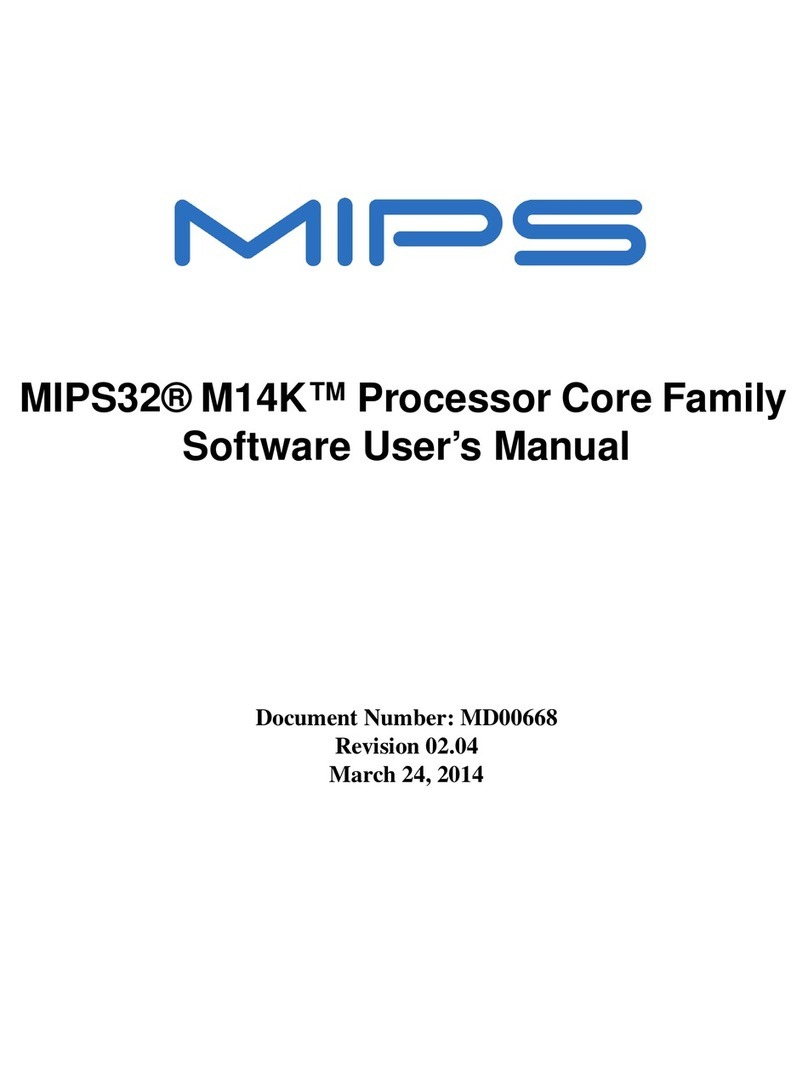
MIPS R4000 Microprocessor User's Manual iii
Acknowledgments for the First Edition
First of all, special thanks go to Duk Chun for his patient help in supplying and
verifying the content of this manual; that this manual is technically correct is, in a
very large part, directly attributable to him.
Thanks also to the following people for supplying portions of this book: Shabbir
Latif, for, among other things, the exception handler flow charts, the description
of the output buffer edge-control logic, and the interrupts; once again, Duk Chun,
for his paper on R4000 processor synchronization support; Paul Ries, for
confirming the accuracy of sections describing the memory management and the
caches; John Mashey, for verifying the R4000 processor actually does employ the
64-bit architecture; Dave Ditzel, for raising the issue in the first place; and Mike
Gupta, for substantiating various aspects of the errata. Finally, thanks to Ed
Reidenbach for supplying a large portion of the parity and ECC sections of this
manual, and Michael Ngo for checking their accuracy.
Thanks also to the following folks for their technical assistance: Andy Keane,
Keith Garrett, Viggy Mokkarala,Charles Price,Ali Moayedian,George Hsieh,
Peter Fu,Stephen Przybylski,Michael Woodacre, and Earl Killian. Also to be
Devine, and Alan Marr, for helping place RISC in a pecuniary perspective. Also,
thanks to the following people at the mystery_train@swim2birds news group: toma,
dan_sears,jharris@garnet,tut@cairo (again), and elvis@dalkey(mateo_b). Their night-
for-day netversations, fueled by caffeine, concerning the viability of the
cyberpsykinetic compute-core model helped form an important basis of this book.
On the editorial front, thanks once again to Ms. Robin Cowan, of the Consortium
of Editorial Arts for her labors in editing this manual. Thanks to Evelyn Spire for
slaving over that bottomless black well we refer to as an “Index.” Thanks also,
once again, to Karen Gettman, and Lisa Iarkowski at Prentice-Hall for their help.
On the artistic side, thanks to Jeanne Simonian, of the Creative department here
at Silicon Graphics, for the book cover design; and thanks to Pam Flanders for
providing MarCom tactical support.
Have we missed anyone? If so, here is where we apologize for doing so.
Joe Heinrich
April 1, 1993
Mt. View, California




























